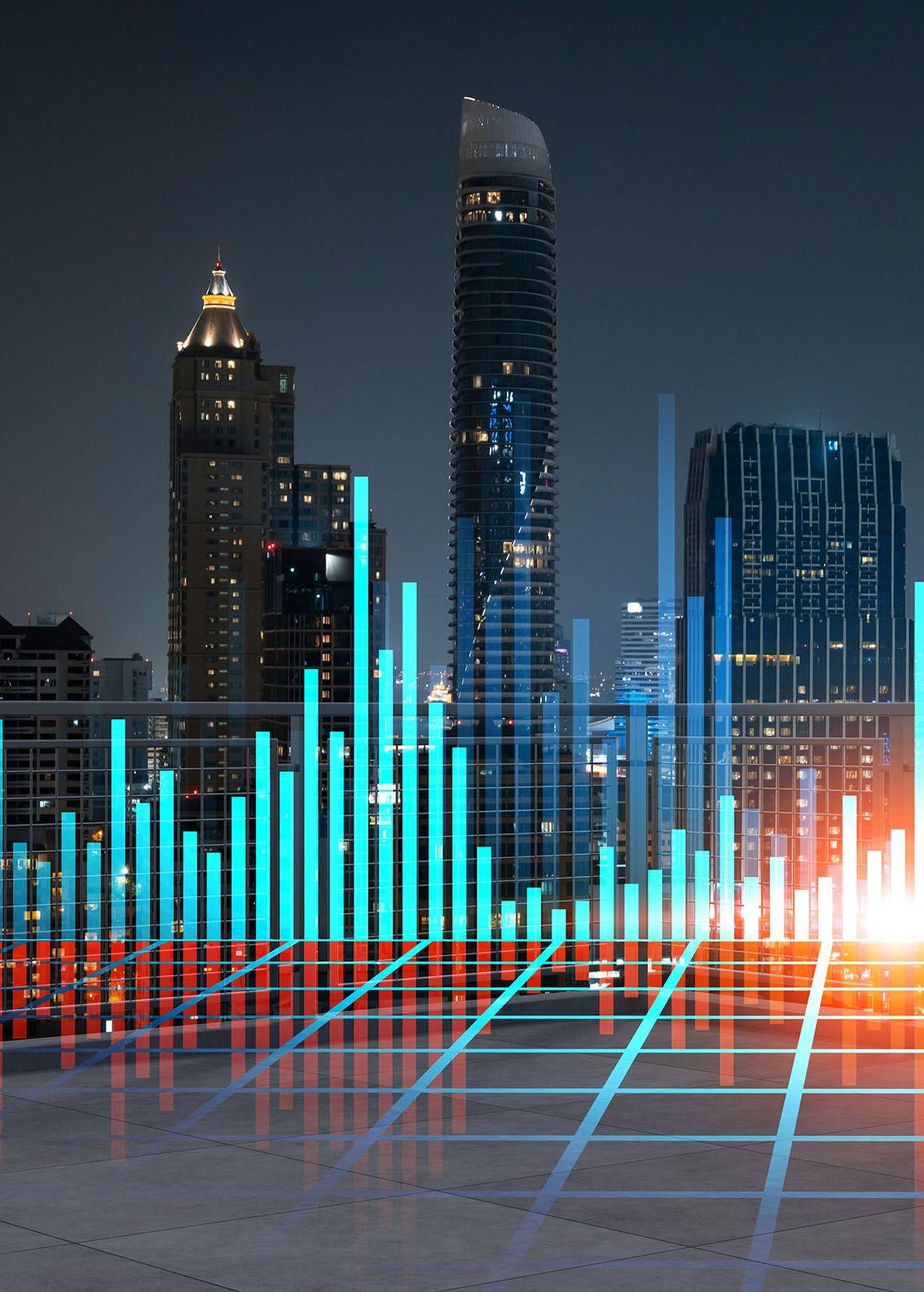
2 minute read
2.10 Looking back: A review of trade finance predictions in 2023

Europe has benefitted from clement weather conditions and, to its credit, has both accelerated an improvement in the infrastructure required for alternative supplies (LNG from the US and Qatar) and the structural shift away from gas.
Just about six months ago, Trade Finance Global reached out to a variety of trade finance experts to help answer some questions we had about the industry. Like always, our friends across the industry came through and provided us with some detailed thoughts on the ins and outs of the trade finance world.
Were they right? Were they wrong? And what will happen in the remainder of 2023? We reached out to our friends again, and they generously gave a postmortem on their bold predictions.
There’s no more ducking and hiding: I am being called to account for the predictions I made to the good readers of TFG earlier this year. Like a doctor called before the Medical Review Board to defend his diagnosis, did I get it right or is the patient sicklier than expected? Worse, are they dead?
Unlike most medical practitioners, whose patients face a binary outcome, I can take comfort from a greater degree of resilience and the see-sawing volatility which allows me to be right depending on what day of the week it is.
Generally, I have been right in assuming the benign environment for trade finance, as opposed to trade itself, would remain. Trading remains solid, and there is evidence of modest, upwards increases in margins despite commodity prices coming off the boil.
Here, I was either slightly overconfident or got my timing wrong. The environment for crude oil has been less rewarding for the producers with the OPEC+ cuts engendering only a very shortlived increase now in reverse. Metals processes have been subdued, but nowhere have they fallen off a cliff.
On gas, Europe has benefitted from clement weather conditions and, to its credit, has both accelerated an improvement in the infrastructure required for alternative supplies (LNG from the US and Qatar) and the structural shift away from gas. Although I identified this as a factor, the speed at which this is happening is a pleasant surprise.
If there was no great reset in prices and demand following what was perceived as a muted re-opening of China, neither were expectations that greater things could lie ahead. Growth in global commodities and, to a degree, goods trade is largely hooked to the Chinese chariot.
When that falters, we all take a stumble. The resolution of this issue is not just a question of economics, however, with much depending on finding a new political consensus. Given the weight of China in global GDP, even baby steps will help, and I don’t rule out political signaling through trade measures.
Demand, especially in the US, remains lacklustre as the central banks fight against inflation in the advanced economies with rate hikes.
But, as with China, this factor also gives hope for future growth with most forecasters predicting an end to hikes by Q4 2023 or Q1 2024.
So I maintain my largely benign view and will take a rain cheque on GDP whilst trade financiers remain relatively satisfied.
As before, I will finish with trade digitisation. Since I last wrote, we saw the demise of Marco Polo (which has survived as a monoproduct company and a ghost of its former self) and the end of a big vision for trade digitalisation.
Despite this, I see no loss of appetite to digitise amongst the bigger banks. The buildout is more complicated and fragmented, with far more limited choices for holistic replacement, but, conversely, smaller players are re-invigorated by the opening up of more competitive space. So, timing has taken a wobble, but the direction of travel remains as clear as before.

Frontier Finance: A look into Correspondent Banking and emerging markets












